Plankton sampling over the Mingulay cold water coral reef
After the excitement of the basking sharks in the bay at Mingulay we head out East again to deeper water, to the area of the cold water coral reef. I’ve been asked to take a plankton sample for a scientist who’s working in Dr Kate Darling’s lab at the Grant Institute in Edinburgh University. During the last couple of years I’ve been really fortunate to be able to use the microscopes and cameras in her lab, working alongside her own research – it’s been a fascinating time.
Kate’s research involves DNA sequencing of foraminifera (they are beautiful microscopic single cell organisms) and through this research she is looking at rising sea temperatures in the North Atlantic Ocean. Kate has equipped me with a plankton net, plastic bottle and clear instructions, but I’m very grateful to the Song of the Whale crew, Mat and Jo, for their experience and help. I’ve never handled a plankton net before and I’m just a bit nervous about losing or damaging it, especially as it has survived journeys from the Arctic to the Antarctic – no pressure then! It’s a rather beautiful object – a big white cloth cone, almost squid like. Our skipper Jim slows down the boat to a couple of knots and we lower the net in to the sea measuring off the rope – 70 meters – the reef is around 200m depth so there’s no chance of it catching the bottom, I hope. We drag it for about a mile, watching the tension of the line cutting the surface of the water, then rippling beneath. I ask Andy to film the line – I’d like to do something with that later.
When we pull it up after half an hour I’m nervous – is there anything there at all? Kate said there could be nothing, but that would show that there are no planktonic forams over the reef. Possibilities of not finding.
We hose down the net and decant the contents into the bottle, then search, with anticipation… Lots of jumping life (shrimps?) and wobbling transparent forms (miniature jelly fish?), some grains, particles, maybe forams? I’ll have to wait until we get back to the lab to find out what’s really there, or not there.
The excess water is drained off and replaced with alcohol, preserved for the rest of the journey, hidden in the fridge.
I talk to Ruth, a social scientist from SAMS about her research into politics of the cold coral reef, this will be an interesting discussion for the future, to be continued.
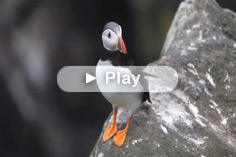

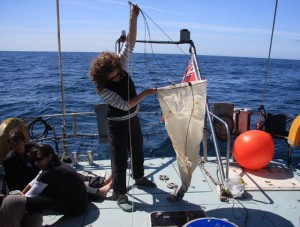



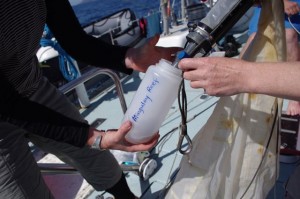


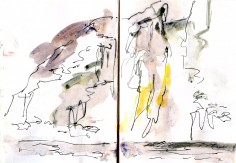
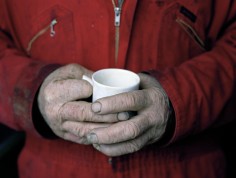
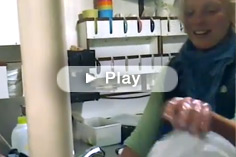
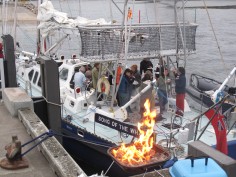

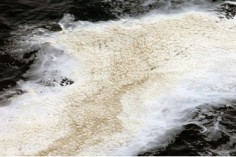
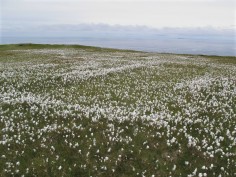

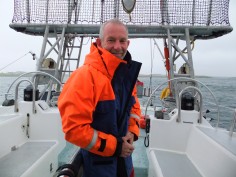








No Comments